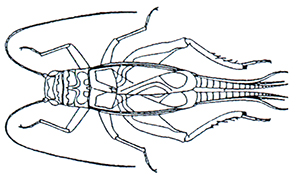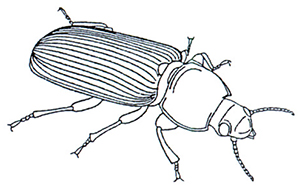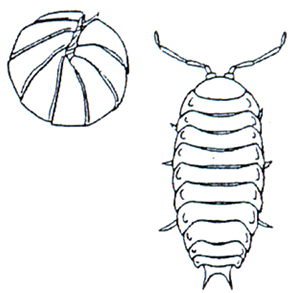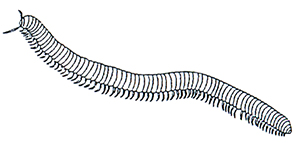Arthropod Diversity
Arthropods = animals that have a chitinous exoskeleton and articulated appendages; horseshoe crabs, crustaceans, arachnids (spiders), and hexapods (insects). All arthropod species are in the Kingdom Animalia and Phylum Arthropoda but they are in many different classes, orders, and families.
chitin - a material made out of chains of sugar. Arthropods, fungi, nematodes, and some mollusks have body parts made out of chitin.
keratin - a fibrous material made out of proteins and is found in vertebrates like us. Scales, hair, nails, feathers, horns, claws, and hooves are made out of keratin.
Biological diversity = the many types of living things on the planet. There are 2.13 million different kinds of living things (species) on the planet that we know of. There may be more in the oceans and tropical forests that we haven’t discovered yet.
Niche = the place where a living thing can survive, grow up, and have a family. The niches we will look at today are; 1) on top of the moss, log, and soil, 2) under the log, 3) in the moss, and 4) in the soil.
Cricket
Class: Insecta
Order: Orthoptera
Family: Gryllidae

This group of insects is closely related to grasshoppers that are in the Family Acrididae. Most species of crickets overwinter as eggs. All crickets have auditory organs on their front tibia. The male cricket rubs its wings together to make a chirping sound. The young cricket, or nymph, looks like an adult except that it is smaller and not sexually developed. Crickets are generally scavengers that will eat essentially anything.
Tenebrio Beetle
Class: Insecta
Order: Coleoptera
Family: Tenebrionidae

These dark brown flying beetles are also known as darkling beetles. Most tenebrionid beetles feed on plant matter of some kind and often live in cornmeal, dog food, cereals, and dried fruits. The Tenebrionidae is the fifth largest family of beetles with over 1000 species in North America.
Isopod (Pill bug)
Class: Malacostraca
Order: Isopoda
Family: Armadillidiidae and Porcellionidae

These organisms are crustaceans and are closely related to crabs and lobsters. The name isopod means "equal legs." Individuals in this group are often found under boards and decaying wood. They eat wood and logs as they decay. Isopods breathe with gills so they must live in an area that is constantly moist.
Millipede
Class: Diplopoda
Order: Spirobolida
Family: Spirobolidea

Millipedes are elongated wormlike animals with many legs. Most millipedes have 30 or more pairs of legs. They tend to avoid light since they have eyespots on their heads that are sensitive to light. They live on dead leaves or other decaying material.
